Pici Pasta (Tuscan Pasta)
Pici Pasta is a thick and satisfying hand rolled pasta that looks similar to spaghetti. Extremely popular in Tuscany region of Italy, this recipe brings the classic Italian noodle to your American kitchen.
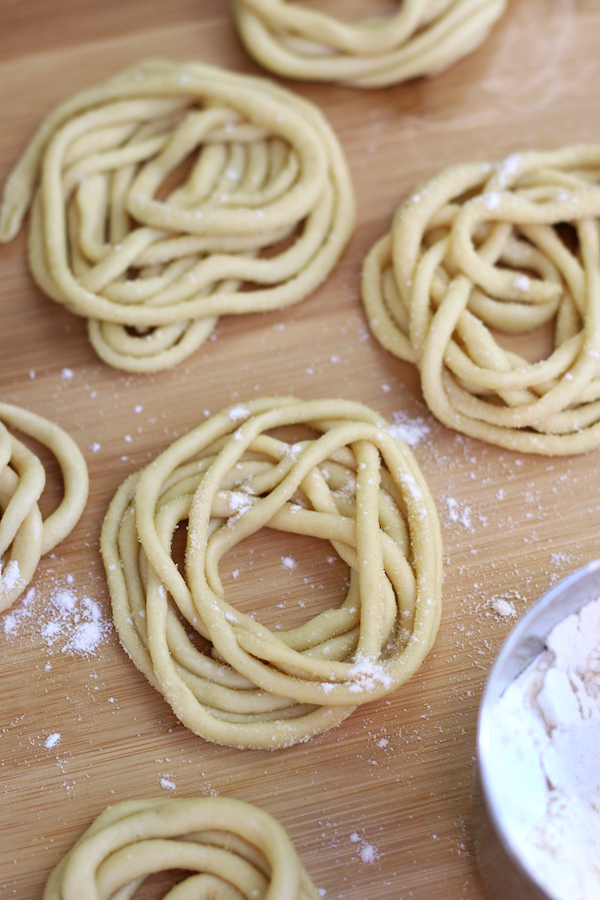 This post may contain affiliate links which I earn a small portion in sales if a purchase is made. Rest assured though, it is never at any additional cost to you.
This post may contain affiliate links which I earn a small portion in sales if a purchase is made. Rest assured though, it is never at any additional cost to you.
Why Make Pici
I truly believe that we have almost lost the art of simply gathering here in the U.S. I mean, as a society we are great at gathering for concerts, sporting events, church services and/or going out to eat. However, the simple act of family and friends coming together and really connecting has greatly diminished. There are probably over 1 trillion different reasons why and honestly I don’t have the energy or the time to dig into the why’s. I do know this though, coming together to have real conversation where people truly listen to understand is one of the most valuable experiences in creating a sense of belonging and feeling accepted.
Here is the irony though, this hasn’t always been easy to do, but then along came 2020.
- This was supposed to be the golden year where we all were going to accomplish big goals and dreams. 2020 took step back and decided, “hmmmm…no… we are going to slow things down. Let’s give them lots of opportunities to practice how to connect without going to big events.”
Friends, I am not in any way, shape or form making light of the challenges and hardships that have come about during this year. Nevertheless, one of the silver linings really has been slowing down and rediscovering the simple things, like a great conversation.
That is exactly what my husband and I have done during his furlough.
We have talked, played games, watched movies and did a ton of cooking. I am happy to report that we also spent a great deal of time, energy and research learning how to make is this Pici Pasta. This pasta is beyond delicious and holds all kinds of sauces beautifully. Additionally, is a perfect activity for date night in or Sunday dinners where all kinds of feelings of connection can be had.
If you are looking for an authentic Italian meal that is tailored to your American kitchen and brings your loved together, this is your meal.
What is Pici Pasta (aka Pinci)?
Pici (pronounced peachy here in the states) is a thick hand rolled pasta that is fatter and longer than spaghetti noodles. It is the cherished pasta of the Tuscan region of Italy and it has been around for centuries.
Interestingly, when learning how to make Pici from Italian home cooks, they do not generally work in precise measurements. It tends to be more by texture. In addition, you will find the cooks that do work with measurements are using the metric system. Because of this, my husband and I did much research and multiple trials to convert this cherished Tuscan pasta. It was highly important to us to make this recipe approachable in the American kitchen.
How To Make Pinci
Making homemade Pici really is very simple however, the most challenging part is the rolling of the pasta noodles. This part can be a little tedious so it is recommended to get family members on board with helping. Put on your favorite music, pour a glass of wine and have a pasta rolling party.
Here are the basic steps to making Pici (see corresponding images in recipe card):
- Mix together flours and salt in a large mixing bowl.
- Add olive oil and water to flour mixture.
- Stir together the flours with the wet ingredients until mostly incorporated. Transfer onto a flat surface or large cutting board.
- Knead the dough until smooth and soft, about 6-7 minutes. It is at this point that 1- 4 tbsp of additional water would be incorporated into the dough if needed because of being too dry.
- Roll dough into a large ball, cover with a dry kitchen towel and let rest for 20 minutes.
- Once 20 minutes has passed, roll dough out flat into a 1/4 inch thickness.
- Using a pastry brush, evenly spread rolled dough with 1 -2 tbsp of olive oil.
- Cut dough into long strips that are approximately 1/4-1/2 inch in thickness using a pizza cutter.
- Using two hands roll the dough strips from the center of the strip working outwards on a flat surface. The thickness will be a little thiner than a pencil.
- Place noodles onto a floured cookie sheet to prevent them from sticking to one another (either all-purpose or semolina flour are fine).
- Boil noodles in heavily salted water until al dente, approximately 6-8 minutes. Note: Some family members may prefer thicker noodles and they will require a longer cooking time. I have found the the thickness my husband prefers can take up to 10-12 minutes to cook to al dente.
Ingredients for Pici Pasta
Another incredibly interesting element of learning how to make Homemade Pici Pasta from Italian home cooks is that they all make it a little different (this video and this video are fun examples of this). They also claim that their way is the authentic way. Some will make it just with water, salt and flour. Others add egg and olive oil. After fine tuning the process, below are the ingredients that my husband and I found to create the best tasting pasta. In addition, this recipe holds up extremely well to both heavier and lighter pasta sauces.
Cooking Hand Rolled Tuscan Pasta
The process of cooking homemade Pici Pasta is very similar to cooking all other pastas. I personally prefer cooking pasta in a larger amount of water (5- 5 1/2 quarts) so that the pasta has room to move. I have found too often that if a smaller amount of water is used, the pasta often sticks together. Because of this, a larger amount of salt ( 1/4- 1/3 cup) is also needed for the water. Additionally, homemade Pici does not need to be dried before cooking. Once the noodles are rolled, begin the cooking process. Here are the steps for boiling homemade Pici Noodles.
- Fill a stock pot 3/4 of the way full with room temperature water.
- Cover with a lid and put on medium heat. Roll pasta and by the time all the noodles are formed, the water should be boiling or very close to boiling. If the pasta water is not at a boil when noodles are done, simply raise temperature to high heat.
- Once water is rapidly boiling add in 1/4- 1/3 cup of salt.
- Carefully transfer Pici Noodles to pasta water, leaving excess flour on cookie sheet. Stir gently.
- Bring water back to a boil and once boiling, lower heat so that the water does not boil over.
- Cook to al dente. Note: Truly the only way to know whether these Pici noodles are cooked to al dente is by taste testing. Cooking to al dente means that the noodles will have some resistance when bitten and yet still be soft.
Tools Used
I have always found that using the correct tools in the kitchen makes the act of cooking 100% easier. Here are the tools we used in making this pasta.
Sauces To Use With Handmade Noodles
What To Serve With This Tuscan Pasta
Marinated Grilled Shrimp Kabobs
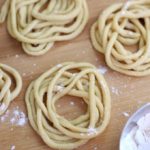
Pici Pasta (Hand Rolled Tuscan Pasta)
Ingredients
- 2 cups semolina flour
- 2 cups all purpose flour
- 2 tsp salt
- 1 cup water *room temperature, plus 1-4 tbsp more if needed
- 1/4 cup extra virgin olive oil *plus 1-2 tbsp extra for spreadin on rolled out dough
Instructions
Making of Pici Noodles
- Add 2 flours and salt to a large mixing bowl and stir well.
- Add 1 cup of water and olive oil to flour mixture.
- Stir until mostly incorporated and then transfer onto flat surface.
- Knead dough until fully incorporated and smooth, about 6-7 mins. At this stage if dough is too dry knead in 1 tbsp of water at a time (up to 4 tbsp) until dough reaches a soft consistency.
- Roll dough into a ball and let rest for about 20 mins covered with a dry kitchen towel. (Image is what the dough looks like just after kneading and before covering with a dry kitchen towel.)
- Once rested, roll dough out to 1/4 inch thickness.
- Evenly spread a small amount of olive oil over top of rolled dough (approximately 1-2 tbsp).
- Using a pizza cutter, cut dough into long strips about the thickness of 1/4- 1/2 inch.
- Using two hands, roll the dough strips from the center of the strip working outwards on a flat surface. The thickness will be a little thiner than a pencil.
- Place rolled Pici noodles onto a floured cookie sheet to prevent noodles from sticking together.
Cooking Pici Noodles
- Meanwhile bring a large pot of water (approximatley 5 qts) to a rapid boil. Once boiling, heavily salt water and add noodles. Cook for approximatley 6-8 mins until al dente, stirring occassionally. Make sure to lower heat halfway through cooking process as water can spill over if left on high heat. Drain pasta and add to your favorite pasta sauce.
Notes
- Either semolina or all-purpose flour (approximately 1/4 cup) may be used on the cookie sheet to prevent noodles from sticking to one another.
- With 2 or more people rolling the dough it will take approximately 20 mins.
- For thicker noodles cooking time may takes up to 12 mins.

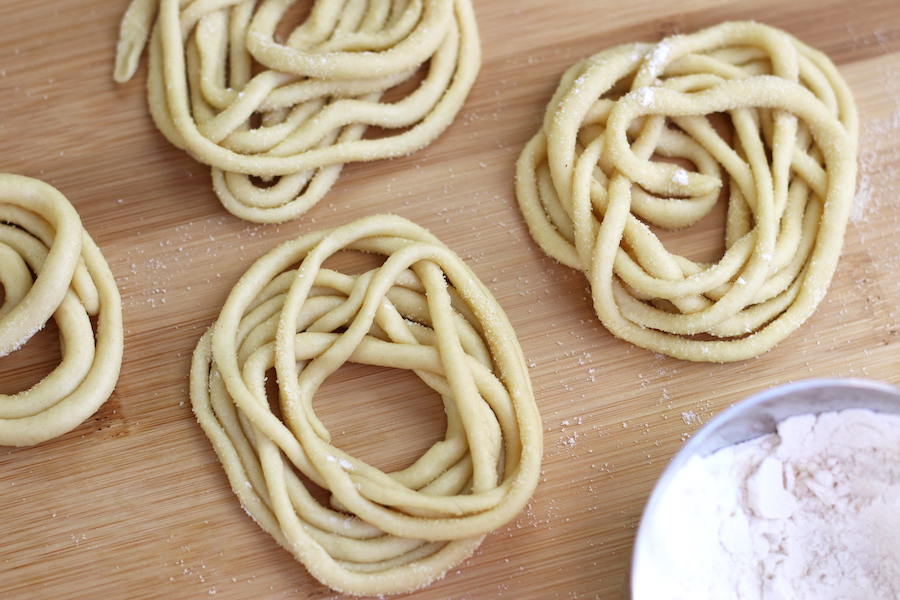
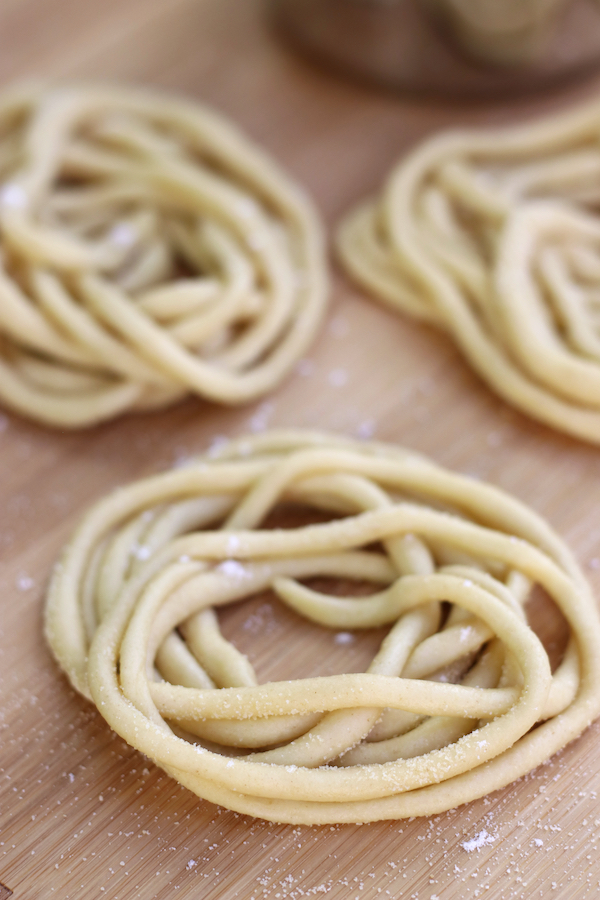
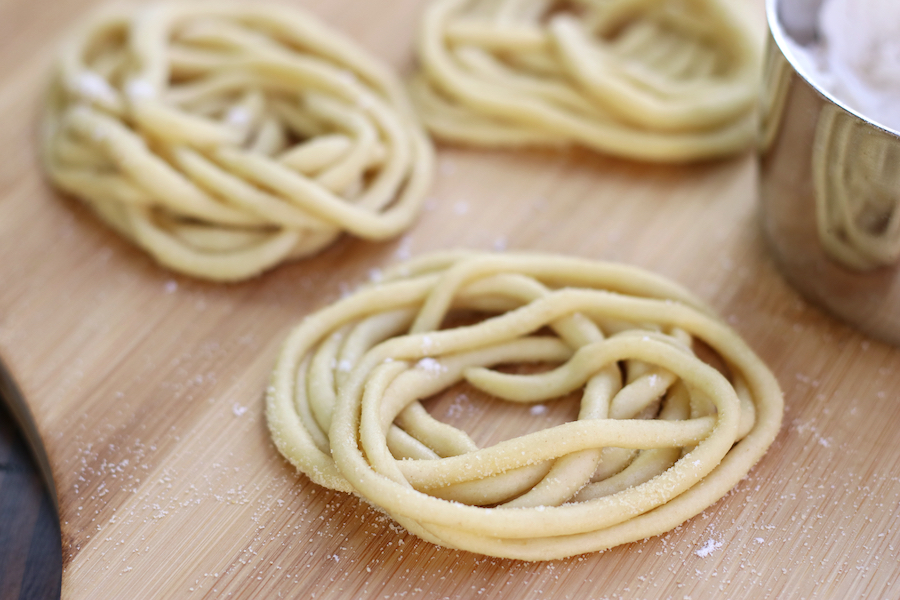
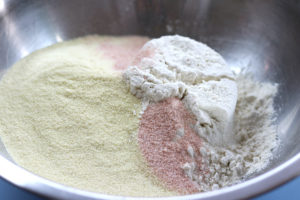
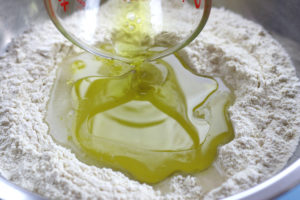
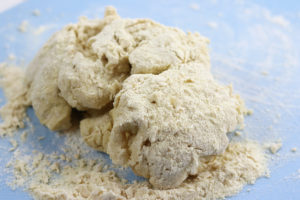
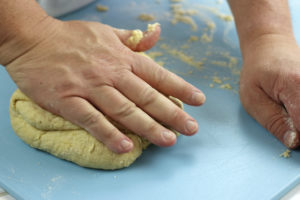
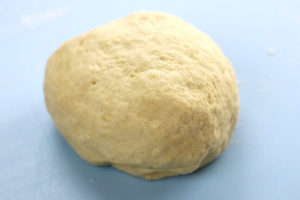
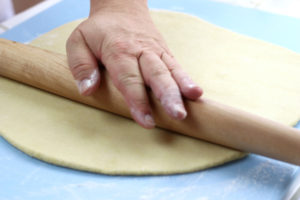
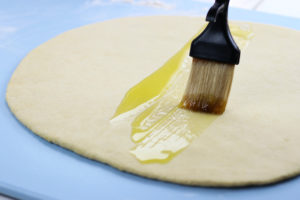
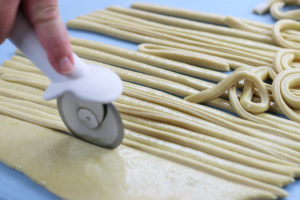
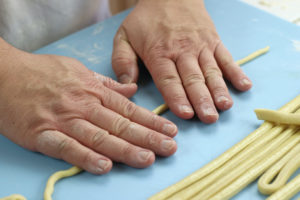
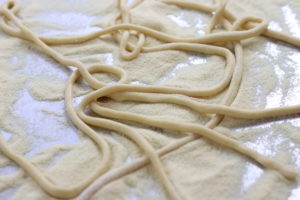
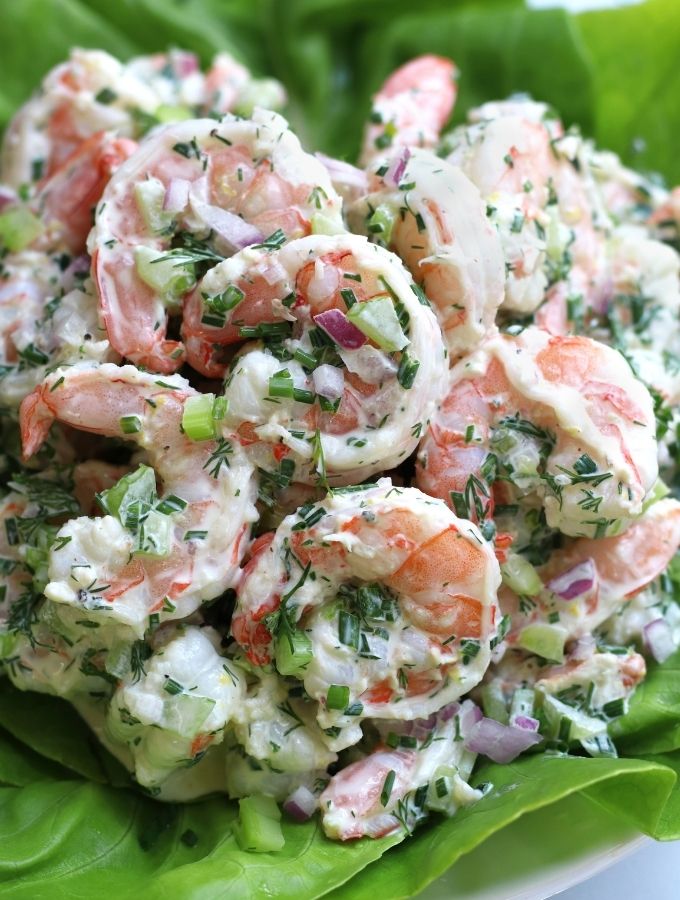
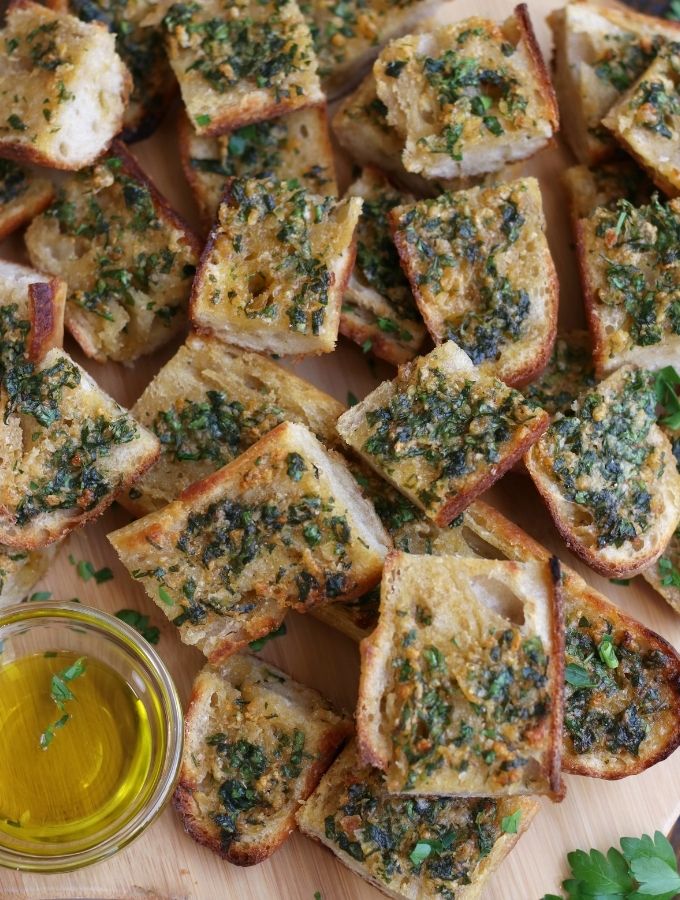

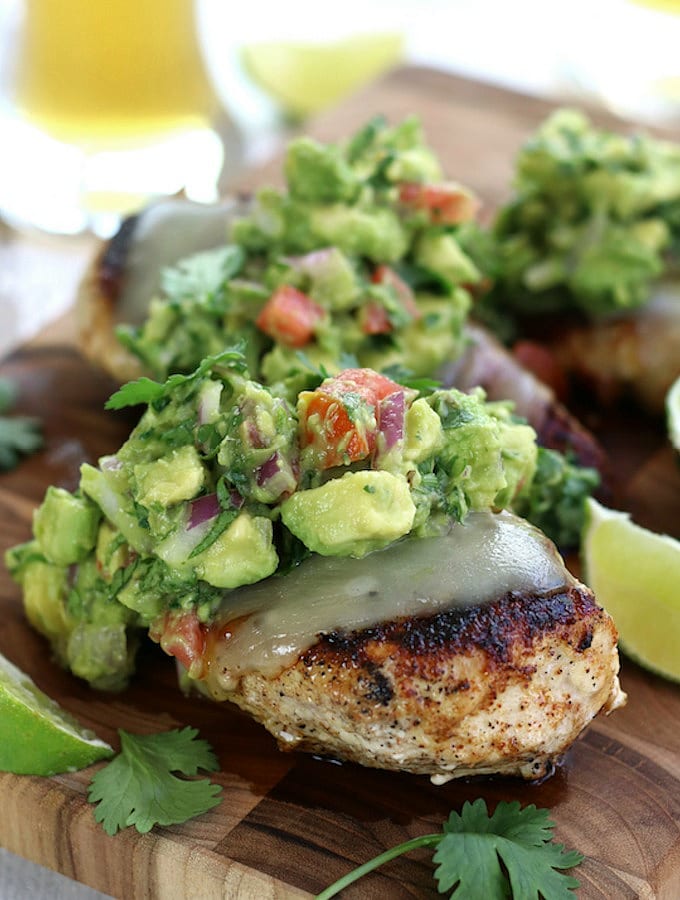
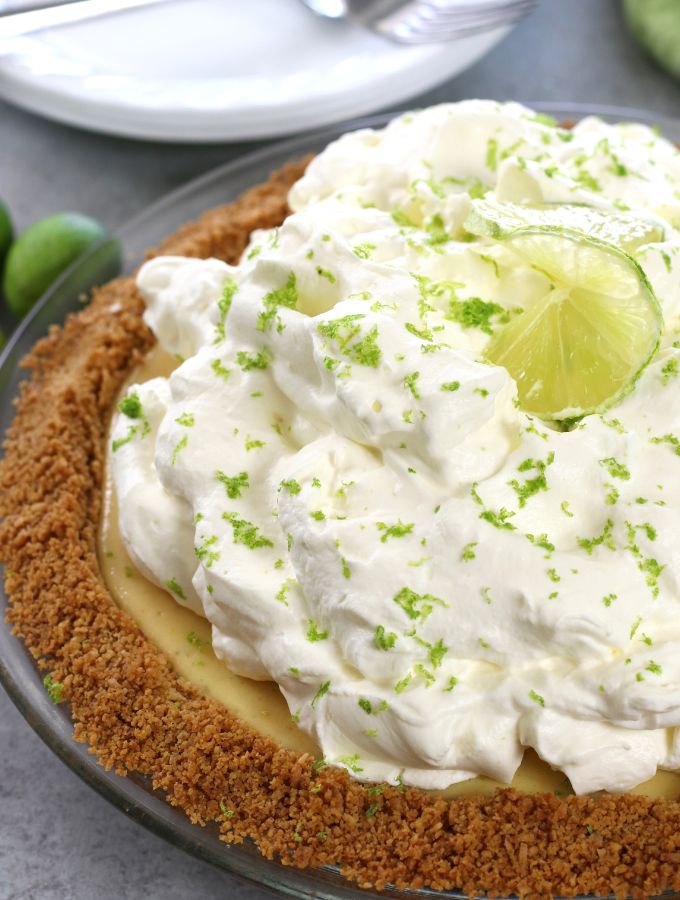
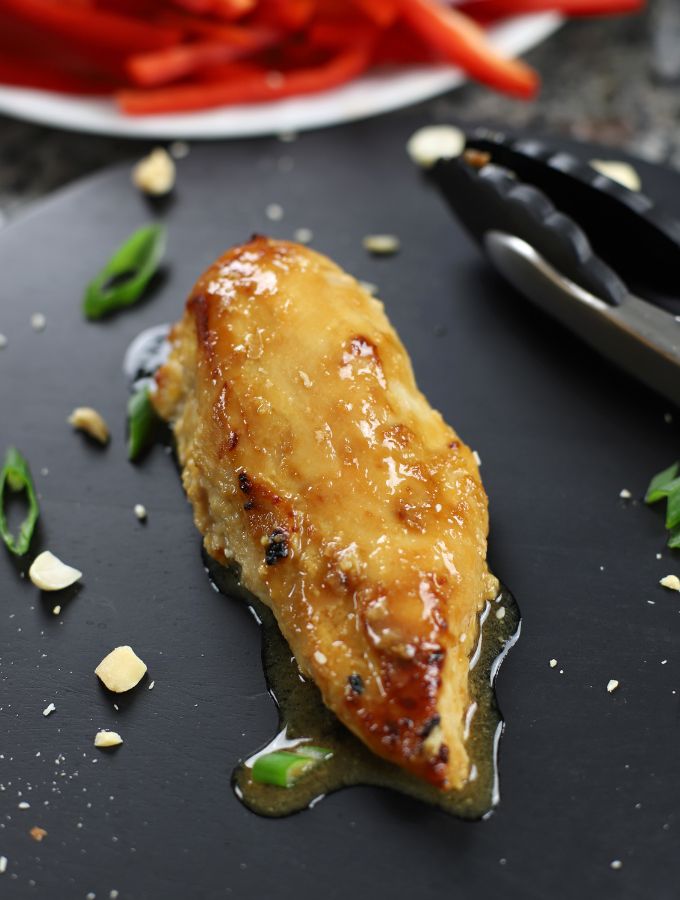
Can this pasta be frozen if too much is made?
Hi Christine. I apologize for the delayed response. Yes, you can freeze homemade Pici Pasta. In complete transparency, we never have leftovers…lol…but I would follow the guidelines from King Arthur Flour that you will find here under bullet point #5. I hope this helps.https://www.kingarthurbaking.com/blog/2015/06/21/homemade-pasta-2
I have to say that I did not think I would be able to pull this off. However, your instructions were fantastic and it was fun making this pasta. Nest time (and that will be soon) I will get my kids to help and we will make a triple batch to freeze.
Oh I love this! My husband and I love making this pasta together. Not only does it make the time go faster but we also have a ball cracking up while we make it. The more the merrier with this recipe.
How do I dry the nests if I wanted to store them for later or give as a gift?
Hi Diana! What a wonderful gift idea! To dry Pici nests for storage or gifting, start by generously dusting the rolled noodles with semolina or all-purpose flour to prevent sticking. Make sure they’re well-coated before moving on. Next, gently coil the floured noodles into loose nests, taking care not to pack them too tightly to ensure even drying. Place the nests on a well-floured baking sheet or drying rack in a cool, dry area with good air circulation, and let them air dry for 24–48 hours, flipping them occasionally to ensure they dry evenly. Once completely hard and brittle, store the dried pasta in an airtight container or bag in a cool, dark place, where it will keep for several weeks. For gifting, you can wrap the nests in parchment paper or arrange them in a decorative jar for a beautiful presentation. I hope this helps, and happy pasta making!